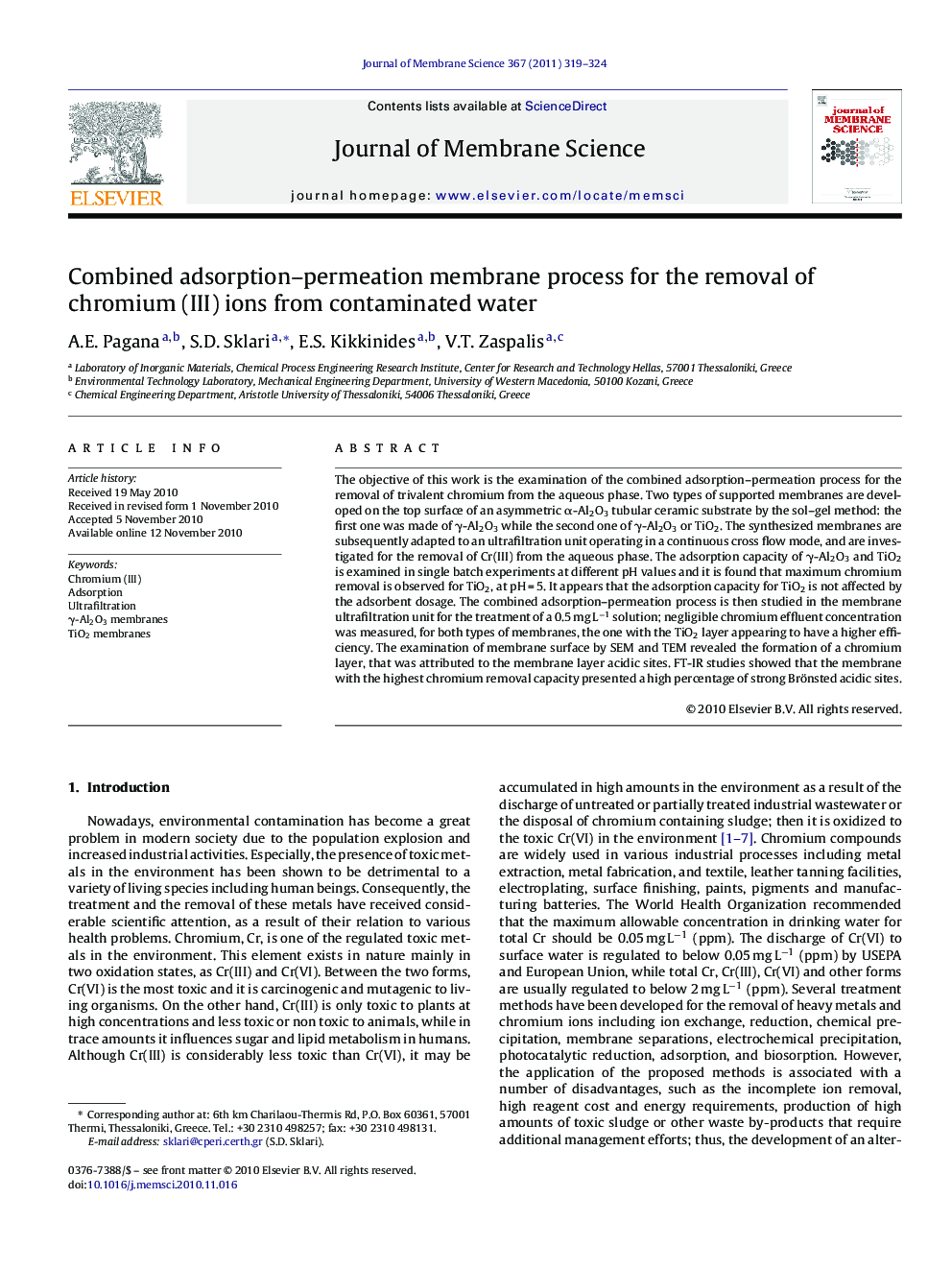| Article ID | Journal | Published Year | Pages | File Type |
|---|---|---|---|---|
| 636044 | Journal of Membrane Science | 2011 | 6 Pages |
The objective of this work is the examination of the combined adsorption–permeation process for the removal of trivalent chromium from the aqueous phase. Two types of supported membranes are developed on the top surface of an asymmetric α-Al2O3 tubular ceramic substrate by the sol–gel method: the first one was made of γ-Al2O3 while the second one of γ-Al2O3 or TiO2. The synthesized membranes are subsequently adapted to an ultrafiltration unit operating in a continuous cross flow mode, and are investigated for the removal of Cr(III) from the aqueous phase. The adsorption capacity of γ-Al2O3 and TiO2 is examined in single batch experiments at different pH values and it is found that maximum chromium removal is observed for TiO2, at pH = 5. It appears that the adsorption capacity for TiO2 is not affected by the adsorbent dosage. The combined adsorption–permeation process is then studied in the membrane ultrafiltration unit for the treatment of a 0.5 mg L−1 solution; negligible chromium effluent concentration was measured, for both types of membranes, the one with the TiO2 layer appearing to have a higher efficiency. The examination of membrane surface by SEM and TEM revealed the formation of a chromium layer, that was attributed to the membrane layer acidic sites. FT-IR studies showed that the membrane with the highest chromium removal capacity presented a high percentage of strong Brönsted acidic sites.
Research highlights▶ Combined adsorption–permeation membrane process. ▶ Removal of chromium ions from the aqueous phase. ▶ Nanoporous asymmetric membranes γ-Al2O3 & TiO2.
